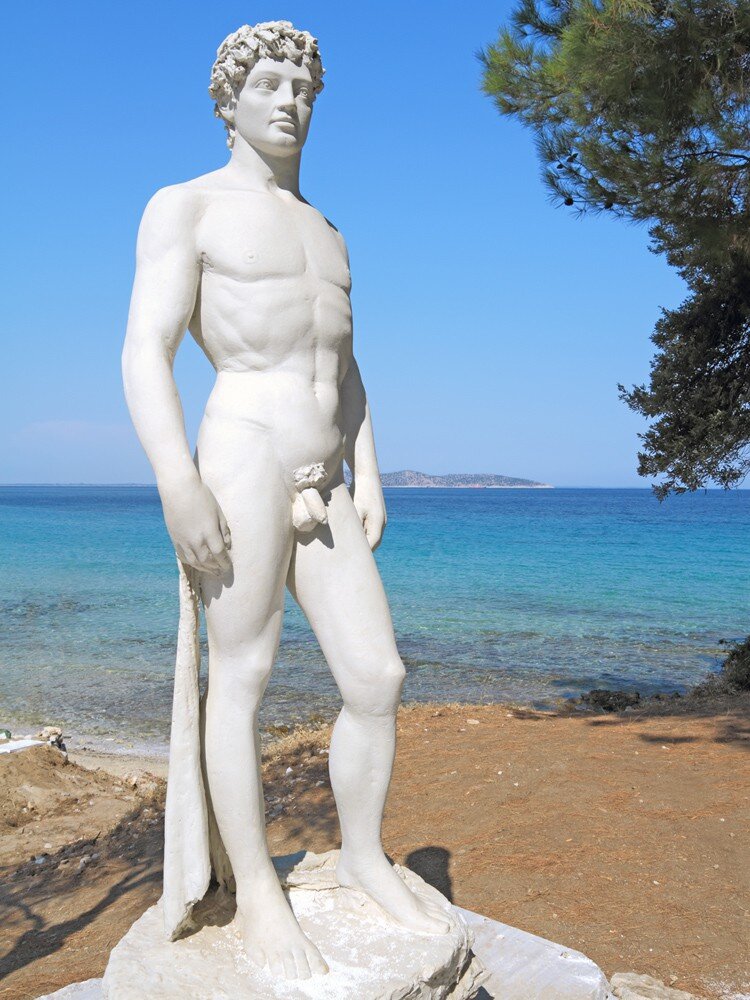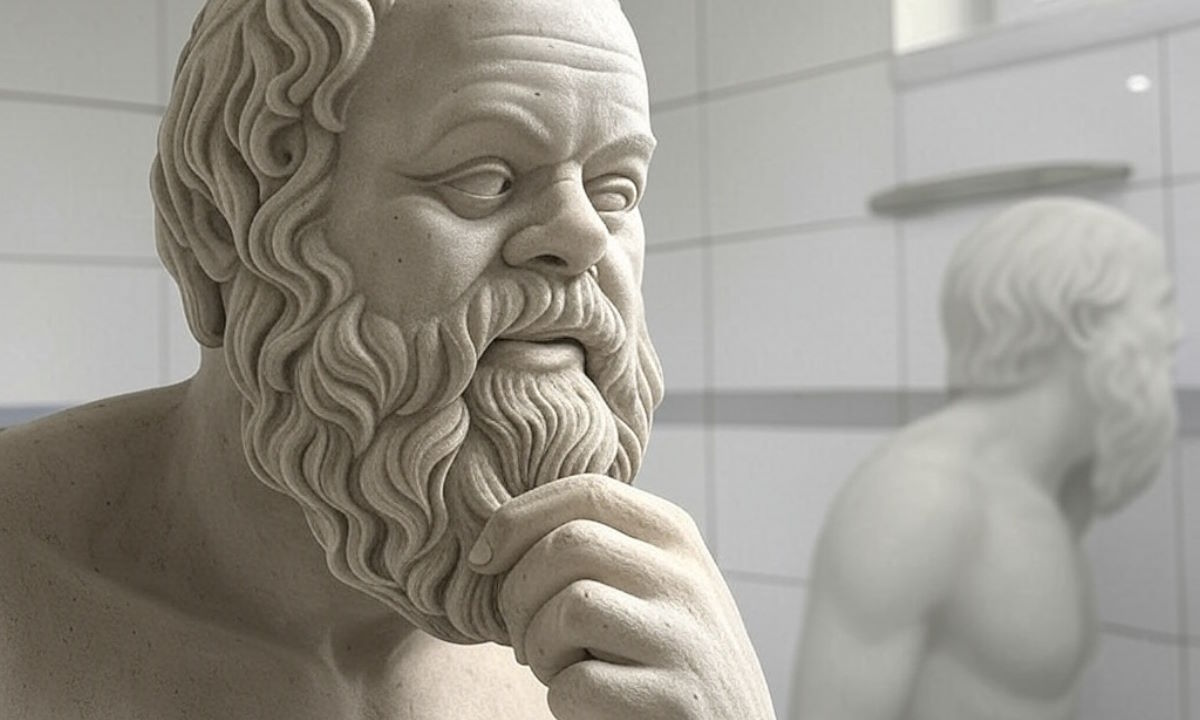The ancient Greek statues of the classical era, which led the way in the development of art, depicted the human body in an idealized way. Each part of the complex obeyed a mathematical harmony and produced esthetically flawless images based on rules that would only be explained by man centuries later.
And of course, to show the ideal male body in all its glory, most statues were necessarily nude. Which, of course, allowed analysts, scholars, academics, art historians, and any future artist to observe every possible and unlikely detail of the work of the Greek sculptors and their Roman copyists.
Dr. Chris McManus examined the asymmetry of the testicles of the statues of classical antiquity as it occurs in real male anatomy. In males, one testicle lies lower than the other in the scrotum, and at the same time, the two testicles differ in size. In most cases, the one that is higher, the right one, is the larger of the two.
However, in ancient Greek statues, although the right testicle is higher than the left, the left one is basically bigger! How could the Greek sculptors, who emphasized and insisted on the correct representation of the human body, have made such a mistake?
The left, the right and the professor
Christopher McManus, a professor of psychology at University College London, observed on a trip to Italy while still a medical student that although the right testicle in ancient Greek statues was higher than the left, it was the left that appeared larger as if it was its size that drew it down.
A connoisseur of human anatomy, the academic studied 187 ancient Greek statues and Roman copies of them and confirmed what he suspected. Soon he had a scientific paper on the asymmetry of the scrotum, which houses the testicles, titled "Asymmetry of the Scrotum in Men and Ancient Statues", published in a prestigious journal in 1976 when McManus was still a student.
McManus was the first to observe something that seemed to have escaped hundreds of generations of doctors: that the left testicles of ancient Greek statues are always larger than the right.
The professor also cited official medical documents to support his claim. In most men, anatomists tell us, the right testicle is higher and larger than the left (in 62.1% of men or 65.1%, depending on which of the two studies you cite), with their average weight said to be 9.95 grams and 9.36 grams, respectively.
So why, the professor wondered, did the Greek sculptors, who were so meticulous in their creations and equally attentive to human anatomy, make such a mistake in depicting the male reproductive organ? Studying 187 statues, McManus found that the ancients placed the right testicle higher ( correctly ) but made the left testicle larger ( incorrectly ).
The scientist assumed that Greek sculptors could not have made such a slip due to either carelessness or faulty study of the male anatomy. They were famous for the perfection of human depiction so some other reason had to exist. Something ideological or symbolic, an inherent element of their society that did not allow them to properly portray what they undoubtedly knew.
There are two prevailing theories today about the false male anatomy of ancient Greek statues. One has to do with physiology. Since the right testicle is higher in the scrotum, the logical assumption is that it is lighter (and therefore smaller) than the left. It is the heavier weight on the left side that pulls it down, some analysts believe the ancients assumed and unfortunately made a mistake in doing so.
The second theory is based on more symbolic reasons and has gained more adherents. According to this, the ancient Greeks believed that one testicle produced male offspring and the other female. By depicting one higher than the other, the artists implied that the obvious masculinity of the depicted male would only produce male offspring.
Both Pythagoras and Aristotle had firm views about which testicle was the one that produced boys. They did not always agree or indiscriminately accepted Anaxagoras' suggestion that male sperm was produced by the right testicle while female sperm was produced by the left, they discussed it seriously.
The sculptors, therefore, placed the right testicle of the man higher, because the highest position was always the best and most privileged. But if the right was higher, the left should be lower. They thought that the left one should be bigger (and therefore heavier), so that it hangs lower than the right one.
The view, however, that one of the two testicles (whichever it is) is responsible for the sex of the child has persisted in the West until recent times. There have even been medical advisors who gave completely uncomfortable advice on conception: In the 1891 "Fundamentals of Conception" Ida Ellis, claimed that "the man is the one who can bear a male or female child at will by wearing an elastic bandage around the testicle he does not want to use!
The symbolic shift of left-right is inherent in many civilizations and the ancients could not rid themselves of prejudice and superstition.
Be that as it may, McManus has noticed something that no one has noticed before, despite the 2,500 years that separate us from classical antiquity and Roman copying. Why the ancients did this will probably remain unknown, for only conjecture and hypothesis can be made about people who studied human anatomy thoroughly and went down in art history for their fidelity to the depiction of the human body.











